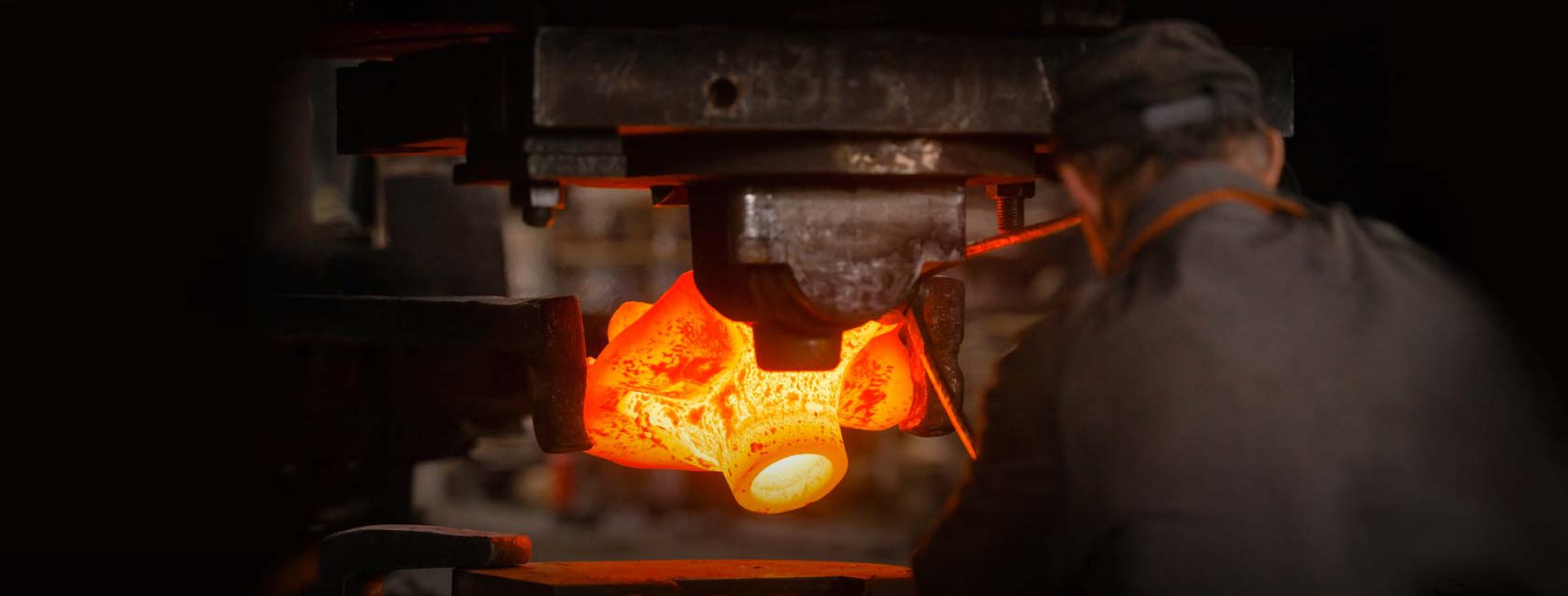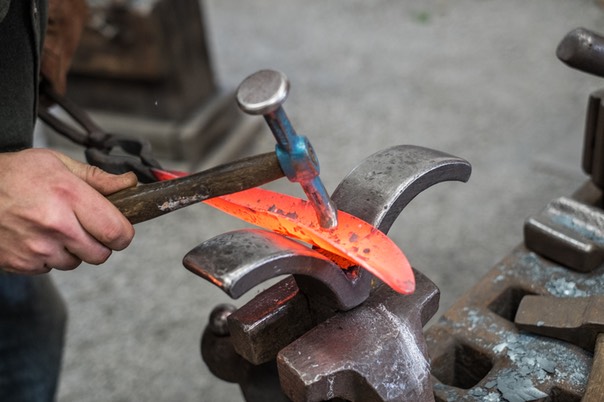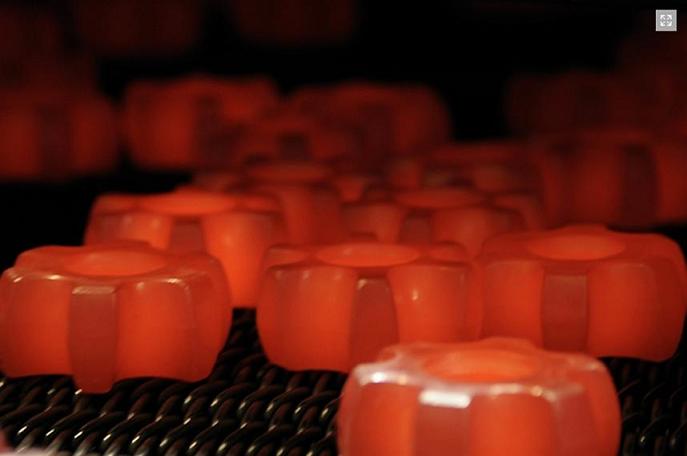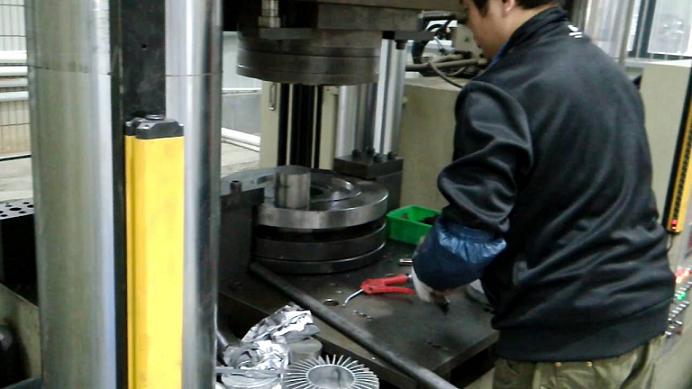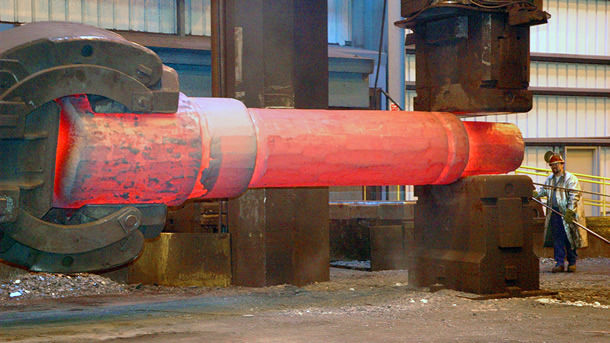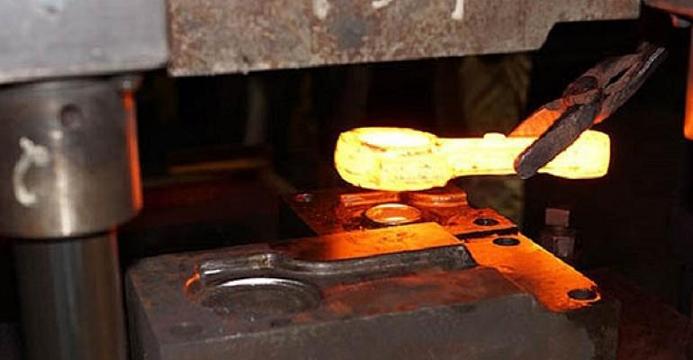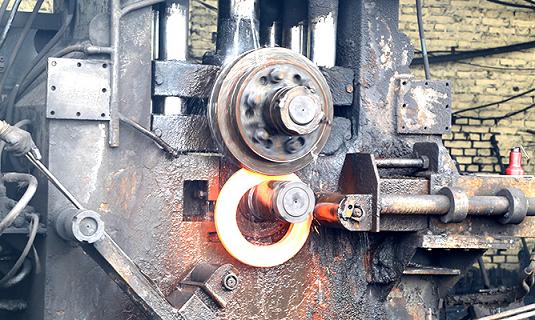What is Forging?
Forging is known as one of the oldest metalworking processes together with casting (differences between forging and casting) and machining . It is the process that steel billet is formed into the desired shape under the workforce of tooling by different forging operations, such as hammering, pressing, rolling, squeezing, etc. To finish a forged part, the operations will be completed in different equipments.
History of Forging
During 1,200-1,000 B.C. as forging grew to be an essential part of human civilization, the term smith or blacksmith emerged. Forging was performed by a smith using hammer and anvil, though introducing water power to the production and working of iron. During this period, Smith’s in the West forged wrought iron using charcoal fires and bellows to increase the heat of the fire and a hammer to bend, cut and shape the metal into arrowheads, knives, scrapers, tools and even artwork. By this point, forging and metal production had spread throughout China and became a part of industrial application.
When it came into 12th century, It is allowed to use large trip hammers or power hammers that exponentially increased the amount and size of iron that could be produced and forged easily. The smithy or forge has evolved over centuries to become a facility with engineered processes, production equipment, tooling, raw materials and products to meet the demands of modern industry.
Modern forging could be traced in the 19th Century. Many forging processes can now be automated with computers, streamlining the process and making for quick and precise parts for industries like aerospace and transportation. Through the development of thousands of years, forging is now one of the most effective methods to produce metal parts for critical applications.
Types of Forging
There are a lot of type of forging. We can divide the type of forging in sides of temperature and technics.
Types of Forging in Terms of Temperature
Hot Forging refers to the forging operations over temperature 1150 degrees celsius for steel. During hot forging, the temperature reaches above the recrystallization point of the metal. This kind of extreme heat is necessary in avoiding strain hardening of the metal during deformation. In order to prevent the oxidation of certain metals, like super alloys, a type of hot forging called isothermal forging is a good choice. In isothermal forging, the metal deformation occurs within a highly controlled atmosphere, similar to that of a vacuum.
The Advantages of Hot Forging:
- An increased ductility.
- Because of the decrease in yield strength, it takes less energy (or force) to work with the material.
- During hot forging and subsequent deformation, pores can reduce (in size) or close completely.
- Because the elevated temperatures increase diffusion it is possible, in turn, to reduce or remove chemical inhomogeneity.
- In hot forging steel, the weak and ductile FCC (face-centered cubic) austenite is deformed instead of the strong BCC (body-centered cubic) ferrite – which would deform at lower forging temperatures.
The Disadvantages of Hot Forging:
- The result of a less precise tolerance caused by warping and thermal contraction. This is caused in instances where uneven cooling is present.
- There is the possibility that the grain structure may vary throughout the metal.
- With hot working, there is also the possibility of an undesirable reaction between the metal being forged and the surrounding atmosphere.
Warm Forging
The warm forging manufacturing process occurs within the temperature range of 650 °C and 1000 °C, depending on the used material and the components type. This is usually above the work hardening temperature of the workpiece and below the temperature at which scale forms.
If the forging temperature is below the transformation point of 740-770 °C, the material should undergo a preliminary heat treatment. This temperature range is used for parts with medium complexity which don’t require heat treatment after forging. For parts with greater complexity, the forging temperature is above the transformation point.
Although this temperature range is close to the one of hot forging, in terms of technology warm forging is rather similar to cold forging.
The warm forging process is placed somewhere between the cold and hot forging techniques, combining all their advantages as surface quality, precision, material usage and flexible shapes but generally requires high engineering skills (tools design, cooling, lubrification) and a dedicated forging press.
Warm forging is an important milestone of Setforge long-standing expertise in high-quality manufacturing. Performed as a single production technique or as an extension to cold or/and hot forging, our warm forging manufacturing process delivers mechanical components of premium quality.
Cold Forging
Cold forging deforms metal while it is below its recrystallization point. Cold forging is generally preferred when the metal is already a soft metal, like aluminum. This process is usually less expensive than hot forging and the end product requires little, if any, finishing work. Sometimes, when aluminum is cold forged into a desired shape, it is heat treated to strengthen the piece. This is called “tempering.”
Despite the word “cold,” cold forging actually occurs at or near room temperature. The most common metals in cold forging applications are usually standard or carbon alloy steels. One of the most common types of cold forging is a process called impression-die forging, where the metal is placed into a die that is attached to an anvil. The metal is then hit by a descending hammer and forced into the die. Depending on the product, the hammer may actually be dropped on the metal numerous times in a very rapid sequence.
Manufacturers may choose cold forging over hot forging for a number of reasons—since cold forged parts require very little or no finishing work, that step of the fabrication process is often dispensable, which saves money. Cold forging is also less susceptible to contamination problems, and the final component features a better overall surface finish.
Types of Forging in Terms of Dies
Open Die Forging
Open die forging is a process that plastically deforms the metal with a series of compressive forces. It is carried out between two flat dies or simple shapes. Usually, the dies do not completely enclose the material, which is why this process is called “open die.” The open die forging method is used mostly for large objects and smaller quantities.
Closed die forging is a process that shapes a metal part by forcing it into the contours of a die. This process gets the name “closed die” because the material is confined between an upper and lower die. The closed die process requires a significant amount of force. It is often used to produce near net shapes.
Roller Ring Forging
Rolled ring forging is a process that uses two curved dies to deform the metal. Normally, the dies are two opposing rollers. This method produces forged products with a final shape that is similar to the dies. The rolled ring process is largely used due to its many benefits. Some of these benefits include a long lifespan, high productivity, low cost, and quality finishes.
Why Forging? What Are the Advantages of Forging?
Stronger Components
Forging provides better mechanical properties, ductility and fatigue and impact resistance because this process refines and directs the grain flow according to the shape of the piece.
Range of Steels
Almost all metals—ferrous and non-ferrous—can be forged. Any kind of steel can be used: carbon, alloy, stainless or superalloy.
Wide Range of Shapes and Sizes
The design of shapes is so versatile that they can be forged from simple bars and rings to more complex pieces, according to different needs.
High Accuracy
Closer dimensional accuracies achieved require very little machining after forging.
Cost Saving
Forging reduces the weight required to manufacture the piece, therefore, there is a real and significant cost savings. Also, the pieces have less excess so they require less machining hours and less material to be used to clean the piece at the end.
Materials of Forging
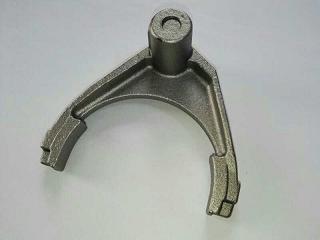 Steel Forging means the forging process using steel as the material. Steel forging is the process compressing steel billets under extreme pressure to make a very hard and strong substance. It has been used for thousands of years to create all types of steel alloys. Modern steel forging is conducted using specialized machines or hydraulic hammers. There are many things to take into consideration when selecting steel forging.
Steel Forging means the forging process using steel as the material. Steel forging is the process compressing steel billets under extreme pressure to make a very hard and strong substance. It has been used for thousands of years to create all types of steel alloys. Modern steel forging is conducted using specialized machines or hydraulic hammers. There are many things to take into consideration when selecting steel forging.
Steel forging is used in a variety of industries. Everything from manufacturing to pharmaceuticals utilize the benefits of steel forgings. Anything that can be made of metal can generally be made stronger and more weight-conscious by forged steel.
Steel forgings are classified into different types of materials, such as alloy steel forging, carbon steel forging and stainless steel forging. CFS Forge is the leading steel forging company in China, we can customize steel forgings in any grade and dimensions.
Aluminum Forging
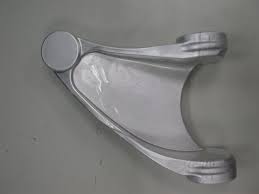 Aluminum forging is considered for its light weight and good properties. Forged aluminum products are used in a wide range of industries, including the aircraft, aerospace, automotive,architectural, appliance, military and defense, marine, petrochemical and process equipment industries. Products manufactured using aluminum include those that require:
Aluminum forging is considered for its light weight and good properties. Forged aluminum products are used in a wide range of industries, including the aircraft, aerospace, automotive,architectural, appliance, military and defense, marine, petrochemical and process equipment industries. Products manufactured using aluminum include those that require:
- High strength-to-weight ratio, such as airframes, automotive frames and panels, wheels.
- Corrosion resistance, such as fasteners, structural components and frames for construction and decorative architectural elements, process equipment and marine equipment.
- Wear resistance and durability, such as process equipment, fasteners and certain motor components.
Application of Forging
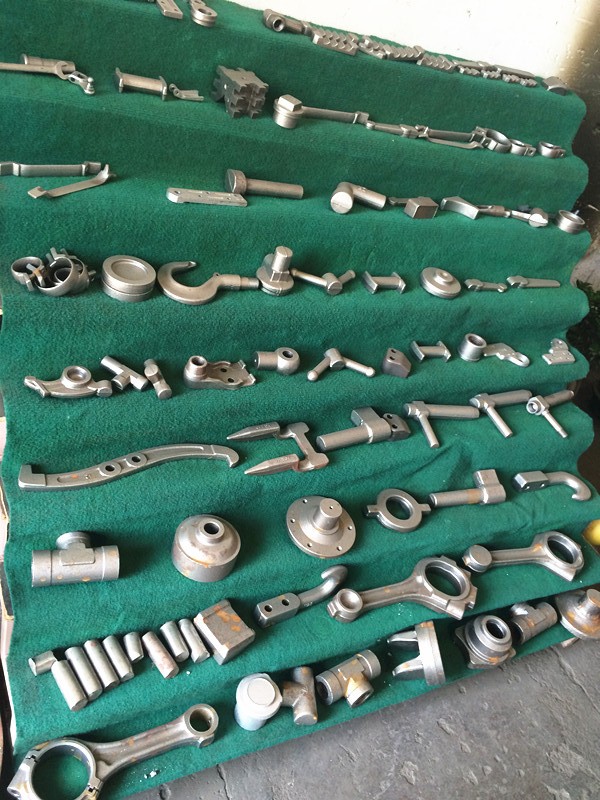 Forging for Automotive Application
Forging for Automotive Application
Strength, reliability and economy are the desired characteristics for application in automobile industry. Forged components possess these characteristics, thus making forged parts suitable for application in automobile industry. Forged components possess good shock absorbing capacity and therefore are found at points of shock and stress such as axle beams, wheel spindles, shafts,kingspin, torsion bars, ball studs, pitman arms, idler arms, and steering arms.
Forged parts also find application in the powertrain, where connecting rods, drive shafts, transmission shafts, differential gears, clutch hubs and yokes are often forged.
Forging for Valves & Fittings
Forgings are often associated with the high pressure applications in the valve and fitting industry because of their superior mechanical properties and freedom from porosity. Corrosion and heat-
resistant materials are generally used for valve bodies and stems, flanges, tees, saddles, elbow reducers, and other fittings.
Forging for Hand Tools & Hardware
Hand tools and hardware have been traditionally forged as the mark of quality. Wrenches, pliers, hammers, garden tools, sledges, wire-rope clips, sockets, nut and bolts, hooks, turnbuckles are common examples of forged hand tools and hardware. Forged components find application in surgical and dental instruments too.
Forging For Machinery & Equipments Application
Forgings find application in off-highway and heavy construction equipment, mining equipment, and material handling applications owing to their high strength, toughness and machinability. Equipment and machinery used in steel, paper, textile, power generation and transmission, chemical and refinery industries also use forged components.
Forging for Defence & Armed Force Application
Forged components are found in almost every implement of defence, from rifle triggers to nuclear submarine drive shaft, all comprise forged parts. Missiles, heavy tanks, armoured carriers, shells and other heavy weapons are common defence-related applications of forged components.
Forging for Aerospace Application
For aerospace application, high strength-to-weight ratio and structural reliability are the most significant properties required. Performance, range, and payload capabilities of aircraft highly depends on these properties. Commercial jets, helicopters, piston-engine planes, military aircraft and spacecraft widely use forgings. Forgings component are used as and in bulkheads, wing roots and spars, engine mounts, hinges, brackets, shafts, beams, landing gear cylinders and struts, wheels, brake carriers and arresting hooks. In jet turbine engines, superalloys (iron-base nickel-base and cobalt-base) are forged into components such as buckets, discs, blades, couplings, rings, manifolds, chambers and shafts.
China Forging Company
Forging China will help to save much costs for our customers under the basis of qualified products. CFS Forge is a leading producer of custom closed die forgings in China for an incredible array of industries, has the distinction of being one of the top companies worldwide in any industry, and the first closed impression die forging company in the world certified ISO9001:2008. We are bound by quality and service.
We have the unique advantage of highly flexible production processes across a broad range of equipment sizes. We are one of the few forging companies in the world that have mechanical presses ranging in size from 300 tons to 2500 tons under one roof. We are able to forge parts raging from 0.05kg-50kg. Besides, we could also supply other value added services to deliver finished components to our customers.
Looking for a reliable forging company from China? Pls do not hesitate to contact us!

